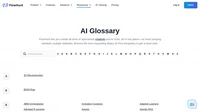A Corpus (plural: corpora) in the context of AI refers to a large and structured set of texts or audio data used for training and evaluating AI models. These datasets are essential for teaching AI systems how to understand, interpret, and generate human language. The term originates from the Latin word meaning “body,” metaphorically representing the “body” of data that an AI system learns from.
Why is Corpus Important in AI?
AI systems, especially those involved in NLP and ML, require vast amounts of data to learn from. Here are some reasons why a corpus is indispensable in AI development:
- Training AI Models: A corpus provides the foundational data on which AI models are trained. The quality and size of this data directly influence the performance of the AI.
- Improving Accuracy: High-quality corpora help in reducing errors and improving the accuracy of AI models. This is crucial for applications requiring precise language understanding, such as chatbots and virtual assistants.
- Diverse Applications: From sentiment analysis to machine translation, a well-constructed corpus can be utilized across various NLP tasks, enhancing the versatility of AI systems.
Features of a Good Corpus
A high-quality corpus is characterized by several key features, ensuring it effectively trains AI models:
- Large Corpus Size: Generally, the larger the corpus, the better the AI model performs. Extensive datasets allow for more comprehensive learning.
- High-Quality Data: The data within the corpus must be accurate and free from significant errors. Poor-quality data can lead to inaccurate AI predictions and outputs.
- Clean Data: Data cleansing processes are essential to remove duplicates, errors, and irrelevant information, ensuring the dataset is reliable.
- Balance: A balanced corpus contains a diverse range of data, preventing biases and ensuring the AI model can generalize well across different scenarios.
Types of Data in a Corpus
A corpus can consist of various types of data, including but not limited to:
- Text Data: Newspapers, novels, social media posts, web pages, and academic papers.
- Audio Data: Radio broadcasts, podcasts, interviews, and conversational recordings.
- Multimodal Data: Combining text, audio, and visual data for more comprehensive AI training.
Challenges in Creating a Corpus
Constructing a high-quality corpus is not without its challenges:
- Data Availability: Collecting a sufficient amount of relevant data can be difficult.
- Quality Control: Ensuring the data is accurate and representative of the target application.
- Data Privacy: Handling sensitive information while adhering to privacy regulations.
Real-World Applications
Some real-world applications of corpora in AI include:
- Language Models: Systems like OpenAI’s ChatGPT are trained on massive corpora, enabling them to generate coherent and contextually relevant text.
- Speech Recognition: Corpora of spoken language are used to train AI systems to recognize and transcribe human speech accurately.
- Machine Translation: Bilingual corpora help in developing systems that can translate text from one language to another.



